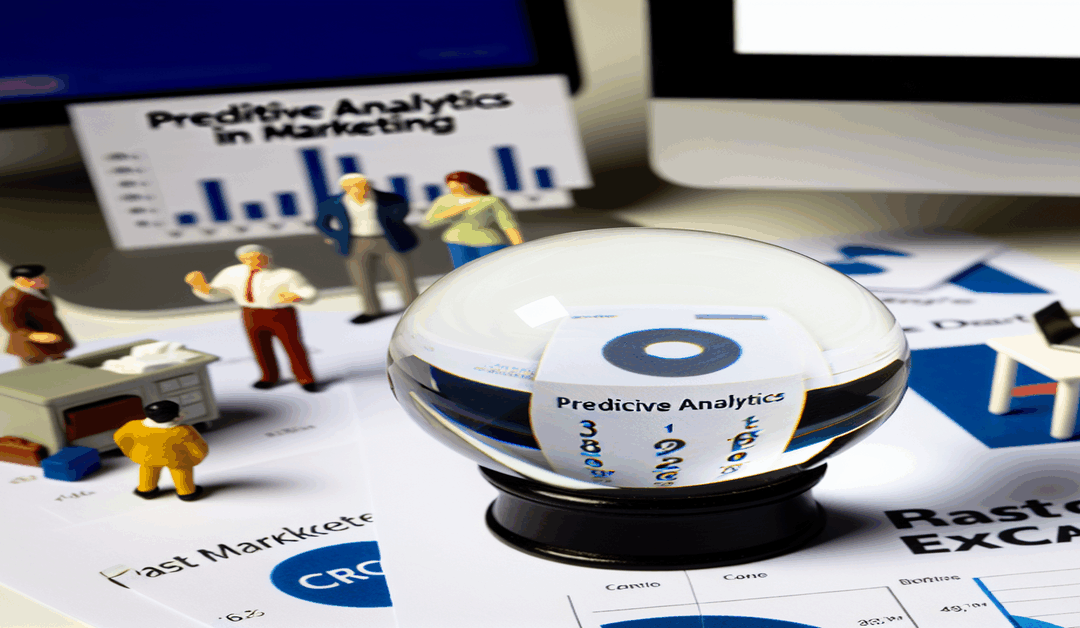Predictive Analytics: The Crystal Ball for Marketing Leaders
As a marketing leader, you’re always seeking ways to stay ahead of the curve and make data-driven decisions that drive measurable results. In today’s fast-paced digital landscape, leveraging the power of predictive analytics has become a game-changer for marketers looking to optimize their strategies and engage customers more effectively.
What is Predictive Analytics in Marketing?
Predictive analytics in marketing is the process of transforming historical marketing data into actionable forecasts that predict future outcomes. By analyzing metrics such as click-through rates, engagement scores, and purchase histories, marketers can uncover patterns and trends that help them make smarter decisions about campaigns, budgets, and customer engagement strategies.
Think of predictive analytics as a data-driven “crystal ball” that enables you to anticipate customer behavior, identify opportunities for growth, and allocate resources more efficiently. With the right models and tools in place, you can continuously update your predictions based on new data, ensuring that your marketing strategies remain relevant and effective over time.
The Benefits of Predictive Analytics for Marketers
Implementing predictive analytics in your marketing efforts can yield significant benefits, including:
1. **Smarter Forecasting:** By leveraging past marketing data to generate accurate forecasts, you can make informed decisions about future campaigns, budget allocation, and customer engagement strategies. This helps you stay ahead of the competition and adapt quickly to changing market conditions.
2. **Improved Campaign Planning:** Predictive models can help you identify the most effective channels, messaging, and timing for your campaigns, enabling you to optimize your marketing mix and maximize ROI. By understanding which tactics are likely to resonate with your target audience, you can create more targeted and personalized campaigns that drive better results.
3. **Enhanced Customer Engagement:** Predictive analytics can help you anticipate customer needs and preferences, allowing you to deliver more relevant and timely content and offers. By engaging customers at the right moments with the right messages, you can build stronger relationships, increase loyalty, and drive higher lifetime value.
4. **Optimized Budget Allocation:** With predictive models, you can forecast the impact of different budget scenarios on key performance indicators (KPIs) such as revenue, customer acquisition, and retention. This enables you to make data-driven decisions about where to invest your marketing dollars for maximum impact, ensuring that every cent counts.
Core Predictive Analytics Models for Marketers
To harness the power of predictive analytics, it’s essential to understand the different types of models available and how they can be applied to your marketing efforts. Some of the core predictive analytics models that every marketing leader should know include:
1. **Customer Segmentation Models:** These models help you identify distinct customer groups based on shared characteristics, behaviors, and preferences. By segmenting your audience, you can create more targeted and personalized marketing campaigns that resonate with each group’s unique needs and interests.
2. **Propensity Models:** Propensity models predict the likelihood of a specific customer action, such as making a purchase, engaging with content, or churning. By identifying high-propensity customers, you can focus your marketing efforts on the individuals most likely to convert, maximizing the impact of your campaigns.
3. **Lifetime Value Models:** These models estimate the total value a customer will generate over their entire relationship with your brand. By understanding which customers are likely to be the most valuable in the long run, you can prioritize retention efforts and tailor your marketing strategies to nurture these high-value relationships.
4. **Attribution Models:** Attribution models help you understand the impact of different touchpoints and channels on customer behavior and conversions. By identifying which marketing activities are driving the most value, you can optimize your media mix and allocate resources more effectively.
Implementing Predictive Analytics in Your Marketing Strategy
To successfully implement predictive analytics in your marketing strategy, it’s essential to have the right tools and processes in place. Many leading marketing platforms, such as Salesforce, Oracle, and Adobe, now offer integrated machine learning and visualization capabilities that make it easier for marketing teams to apply predictive models and derive actionable insights.
However, adopting predictive analytics is not just about technology. It also requires a cultural shift towards data-driven decision-making and a willingness to experiment and iterate based on the insights generated by your models. By fostering a culture of curiosity, collaboration, and continuous improvement, you can ensure that your marketing team is well-positioned to leverage the power of predictive analytics and drive measurable results.
The Future of Predictive Analytics in Marketing
As the marketing landscape continues to evolve, the role of predictive analytics will only become more critical. With the proliferation of data sources and the increasing complexity of customer journeys, marketers will need to rely on advanced analytics to cut through the noise and deliver personalized, relevant experiences at scale.
Looking ahead, we can expect to see even more sophisticated applications of predictive analytics in marketing, such as real-time optimization of campaigns based on live data streams, and the use of AI-powered chatbots and virtual assistants to deliver hyper-personalized customer experiences. As these technologies continue to mature, marketing leaders who embrace predictive analytics will be well-positioned to stay ahead of the curve and drive sustainable growth for their brands.
Conclusion
Predictive analytics is a powerful tool that every marketing leader should have in their arsenal. By leveraging historical data to generate accurate forecasts and actionable insights, marketers can make smarter decisions about campaigns, budgets, and customer engagement strategies, driving measurable results and staying ahead of the competition.
To succeed with predictive analytics, it’s essential to understand the core models available, invest in the right tools and platforms, and foster a culture of data-driven decision-making within your marketing team. By doing so, you can unlock the full potential of predictive analytics and take your marketing efforts to the next level.
So, what are you waiting for? Start exploring the world of predictive analytics today and discover how it can transform your marketing strategy. Share your thoughts and experiences in the comments below, and let’s continue the conversation about the future of data-driven marketing.
#PredictiveAnalytics #MarketingStrategy #DataDrivenDecisions
-> Original article and inspiration provided by Pierre DeBois
-> Connect with one of our AI Strategists today at ReviewAgent.ai

